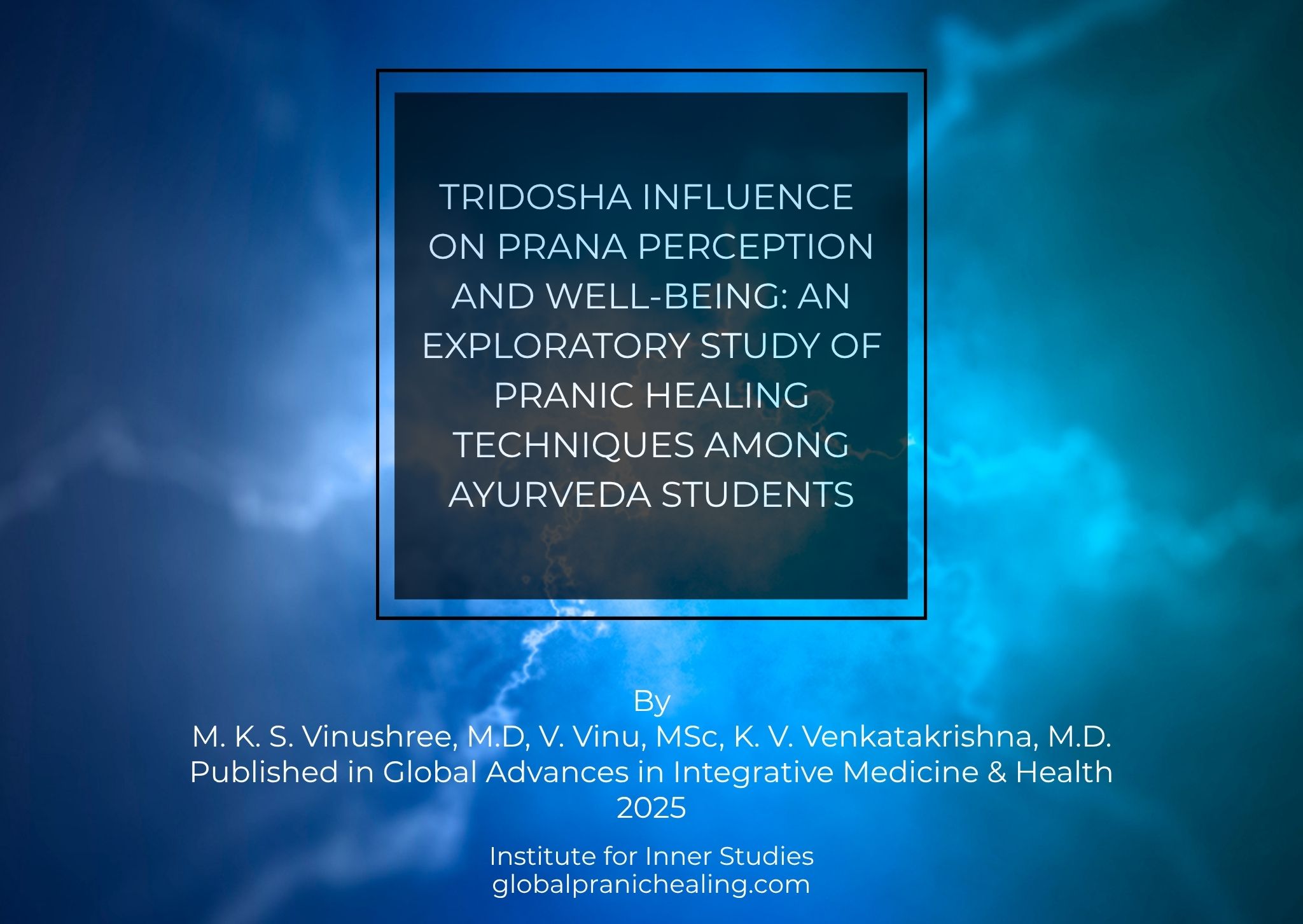
01 Oct Tridosha Influence on Prana Perception and Well-Being: An Exploratory Study of Pranic Healing Techniques Among Ayurveda Students
Abstract
Background
Ayurveda Prakriti determines individuals’ physical, physiological, and psychological features. Prana—the vital life energy—flows throughout the body and is intimately linked to the tridosha.
Objectives
This pilot study aims to explore the relationship between tridosha and the intensity and distribution of Pranic Energy Sensations (PES), along with physiological parameters and mental well-being.
Method
This single-arm pilot study was conducted at a Government Ayurveda Medical College, Mysuru, Karnataka, India, using convenience sampling. Data collection encompassed demographic details, the Dosha self-assessment questionnaire, Positive State of Mind Scale (PSOMS), and physiological parameters including Body Mass Index (BMI), Peak Expiratory Flow Rate (PEFR), oxygen saturation (SpO2), and temperature. Following Sensitizing the Hands Practice (SHP) and Energising Prana Technique (EPT), the intensity and distribution of PES in the palms were recorded and analyzed.
Results
Ninety-one apparently healthy Ayurveda students with a mean age of 24.86 ± 2.32 years participated. Exploratory correlations suggested that PES intensity had a positive correlation with Body Vata (ρ = .224, P ≤ .05) and Pitta (r = .209, P ≤ .05). Mind Vata showed a negative correlation with Positive State of Mind (ρ = −.373, P ≤ .01). Body Vata also showed correlations with forehead temperature (pre: ρ = .282; post: ρ = .348, P ≤ .01), and Body Kapha with PEFR (ρ = .206, P ≤ .05). A small to moderate reduction in temperature was observed post-EPT.
Conclusion
This pilot study identified an association between higher PES intensity and Body Vata and Pitta dominance among Ayurveda students, suggesting a potential link between PES, Prakriti, physical parameters and psychological state. These findings align with Ayurvedic concepts connecting Vata and Prana, offering preliminary support for their relevance in biofield therapies. Further studies with control groups and objective validation are recommended.
